Pigs are by far my favorite homestead animal. They are curious, affectionate, and incredibly smart. Those are also the characteristics that make them uniquely challenging.
The first time I ever saw a pig I was 12, travelling in Eastern Europe. The pig had gotten out and was being chased around a courtyard by four or five young men. I remember one of the men football tackling the animal, missing all of her except her tail, and how loudly the pig screamed the whole time. In some ways, raising pigs is not for the faint of heart.
My partner was already raising pigs for sale when I met him in 2013, and he and I had been dating about two months when we decided to get five breeding sows and a boar. Since then, pigs and piglets have been a daily part of my life and it’s hard to imagine going back.
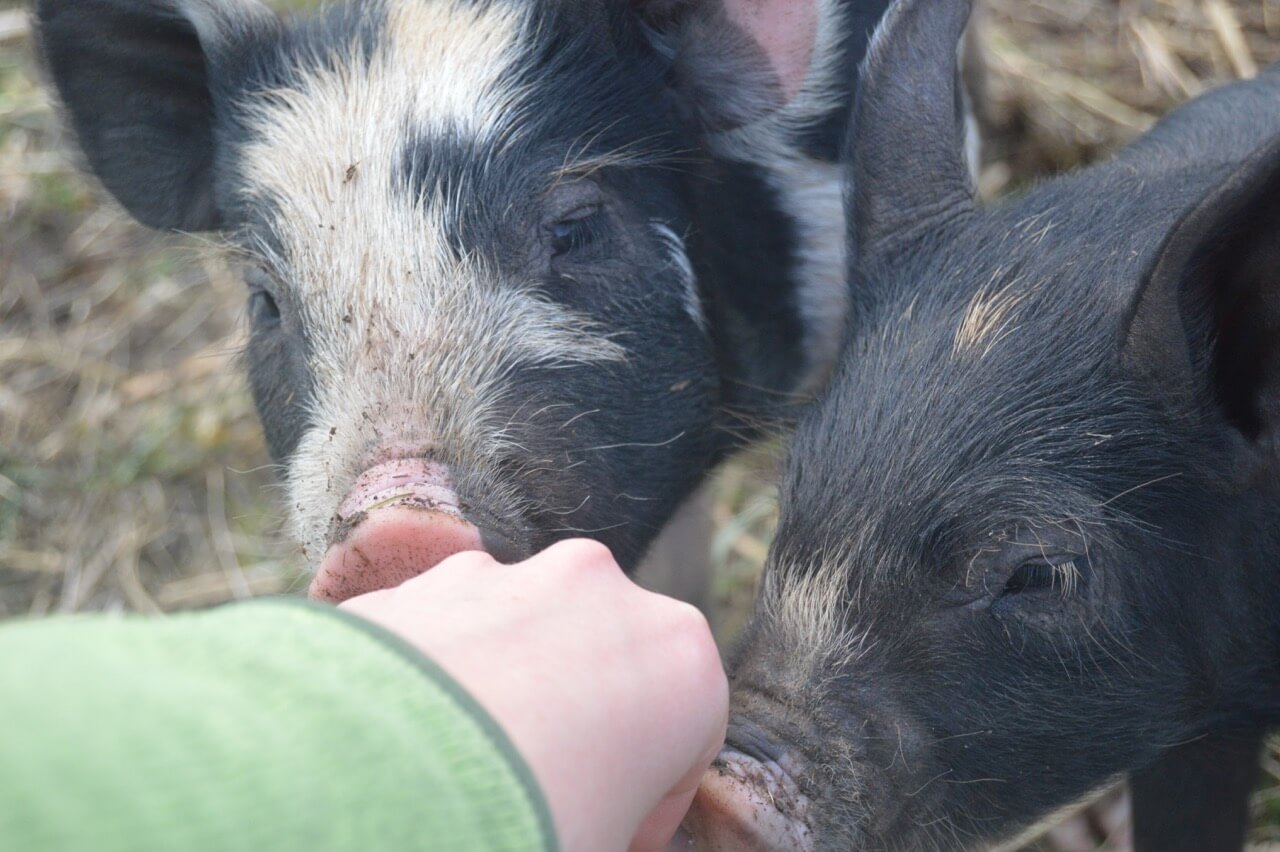
If you are considering adding pigs to your farm or homestead, here are some tips and things to think about and some helpful insight on how to raise pigs.
Menu
Where Will The Pigs Live?
The biggest question you face when thinking about raising pigs is where you are going to put them. Here are some things to consider.
Is it legal to keep pigs in your area, and if so, how many? In most rural areas, and certainly any place zoned for agriculture, the answer is yes and the answer to how many is lots. In semi-rural, suburban, or even urban areas, you might be surprised. The city I went to college in allowed 3 potbellied pigs (a pet variety, not a meat variety) in a “dwelling unit.” Theoretically, that’s a lot of pigs per house!
As my partner and I discovered, landlords are not normally happy about pigs (even if they seem excited at first!) which was part of the decision to buy our own property. Assuming you are zoned for other varieties of swine, you still may have a hard time finding a landlord if you are renting and hoping to keep pigs.
Pigs have a reputation for being messy animals, which is only partly deserved. Landlords don’t like the mess or the smell, or sometimes the sound. Pigs are actually very fastidious about separating their waste from their eating and sleeping areas, as long as they have enough room. However, they are rooting and foraging animals. Instead of grazing at grass, they tear it up, which makes their living areas quickly messy and muddy.
Having room to rotate your pigs from paddock to paddock is a very important part of keeping pigs. Because the ground gets torn up so badly new ground helps protect your pasture, keep your pigs dry, and keeps your pest-pressure low, helping to keep your animals healthy.
As for the smell, well… pig poop smells. It smells sweet to me, although that could be an acquired taste. Still, you don’t want your pigpen under your bedroom window. Consider placement on your property, relative to your house—and make sure you’re not downwind.
What Sort Of Pen Should You Build?
Let’s talk about fencing. Pigs are the escape artists of the barnyard. Like a chicken, they squeeze through cracks. Like a bull, they break weak barriers. Like a dog, they rush past you when you open the gate. Their noses are incredibly strong, and when the ground is wet they can root T-posts right out of the ground.
My experience has been that if you are careful to close up all the gaps they could squeeze through as little piglets, they usually don’t become escape risks again until they are almost to slaughter-weight.
On pasture, we fence growing hogs with T-posts and hog panels, reinforced with a low line of electric fencing. If the electric fencing gets grounded out, the pigs are likely to escape. Theoretically, electric fencing is all that hogs need, but my partner and I have found that if there is no actual fence behind it, they run right through it.
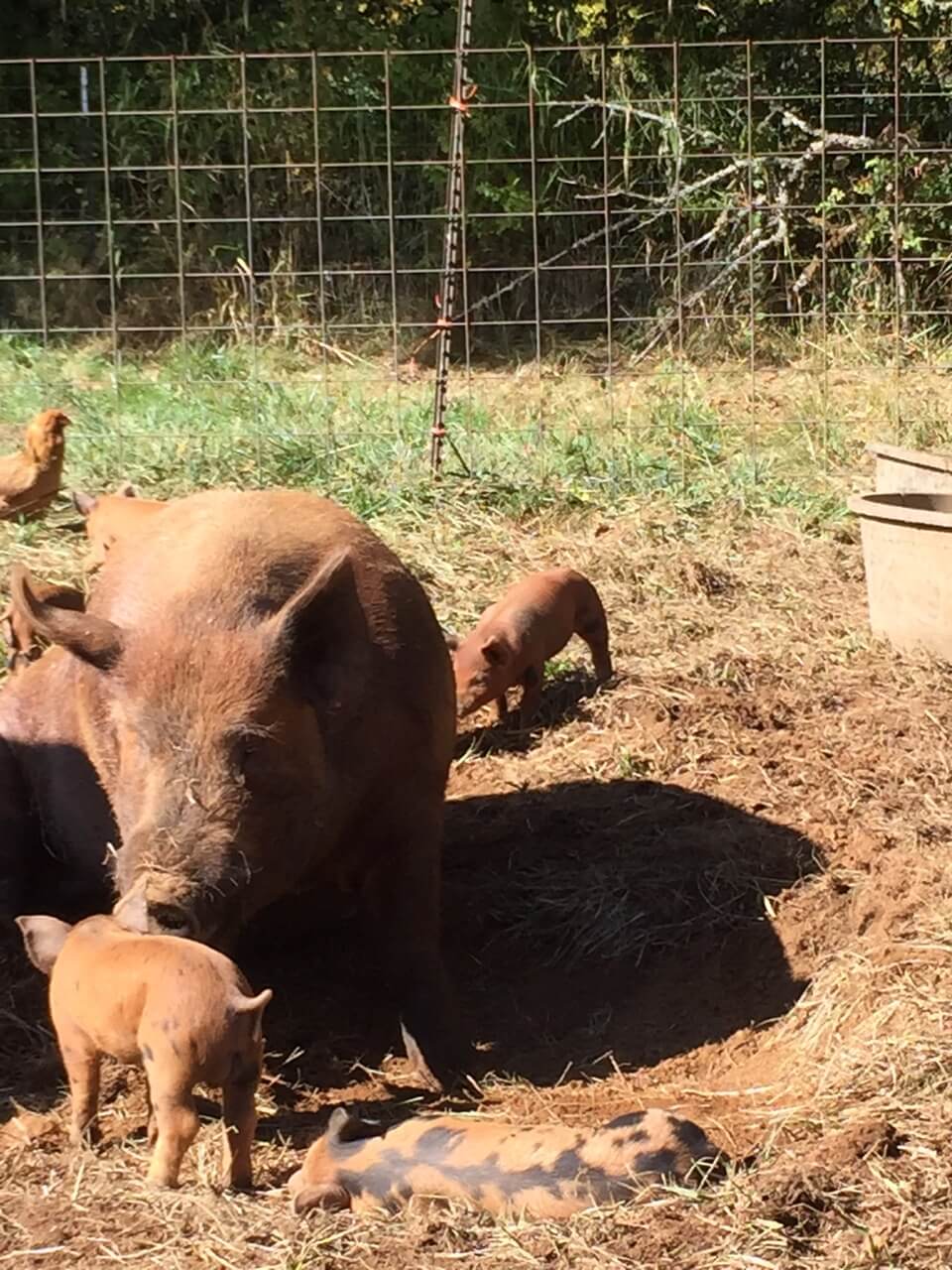
Keeping pigs in the summer is relatively easy. Within their paddock, pigs only need basic shelter from the elements. In hot weather, it will primarily be used as a shade-structure. Keep in mind that whatever you build them for a shelter is going to get used as a scratching post, and hogs are strong animals.
There are lots of different designs for hog housing, using all kinds of materials from tarps and hog panels, to plywood, two-by-fours, corrugated iron and plastic sheeting. Hog houses range from temporary and portable to permanent.
Hogs don’t sweat, so they need a little support staying the correct temperature. Having shade and access to a water-hole or a mud wallow are essential.
Mud is a mixed blessing with pigs, because it is vitally important in the summer. Rolling in a mud wallow is a pig’s favorite way to do stay cool and damp in hot weather. Thus the saying, “happy as a pig in muck.” However, during the wet season, rain turns a pig’s dusty, uprooted field into a mud pit that makes your pigs cold and miserable.
In the winter, your pigs’ needs will depend on your environment. If the ground freezes, you don’t have to worry about mud, and pigs are really hardy to low temperatures, especially if they have other hogs to huddle with. Pigs can live outside all year ‘round as long as they have a place to get out of the wind, and dry bedding to keep them off the freezing ground. Big pigs are more tolerant of cold, but more sensitive to heat. In the winter, piglets need a heat lamp. In a rainy climate, however, we have found that a barn is the only way to keep pigs out of mud in the winter.
If you are raising pigs for meat, not as pets or for breeding, you will only keep them about six months, so if you time your piglet purchase correctly, you will only be dealing with one season’s weather challenges.
How To Buy Piglets
Pigs are pack animals, so consider getting two. If you get just one, it is going to want human attention constantly, and it will be lonely and depressed if you isolate it.
The ideal situation of course is to know someone you trust who breeds piglets. If you know of any local farms who sell pork, you can ask them where they get their piglets, but healthy piglets tend to be in high demand. To get consistently quality and healthy animals, we decided to start breeding our own sows.
Before we started breeding our own piglets, we bought pigs off craigslist. At almost any time of the year there are piglets for sale on craigslist, but the quality of the breeds and the health of the animals is really hit-or-miss.
There is nothing wrong with the craigslist rodeo, you just need to know what to ask and what to look for when you visit the pigs.
How To Care For And Feed Piglets
Piglets are ideally weaned between 6 and 8 weeks. Industry standards on weaning vary. Weaning at 3 weeks is typical, some operations wean as early as 10 days. Ask when the litter was born to get an estimate of their health. A longer lactation means bigger, healthier (and happier) piglets. Bigger piglets are always going to be stronger, healthier and grow faster. Healthy piglets at 8 weeks should weigh between 40 and 60 pounds (still small enough to pick up, but barely!)
The piglets shouldn’t be living in mud, especially in the winter or cold season. Look for fresh bedding (straw or sawdust), clean water, and daylight. Piglets should be energetic. Check the animals for milky eyes, skin rashes, lethargy and other signs of general ill-health. Ask the farmer what they’ve been fed. Once weaned, piglets should be getting a higher-protein growing ration than their parents.
You don’t need a livestock trailer to pick up piglets. They can go in the back of a truck if you have a canopy, or high side-walls on a flatbed.
A note on holding and handling piglets
When you are getting new piglets, you will have to catch them, put them in your truck, get them back out on your property. Generally pigs aren’t very happy to be handled, and especially don’t want to be picked up. (They will quickly get too big anyway).
The safest way to pick up a pig is by both its back legs, one in each hand. It will thrash. It will scream (and I mean scream). It will get mud all over you. Don’t drop it. Get someone to help you. Pig wrangling is not a one-person job.
It is tempting when pigs are smaller, to pick them up under the belly like a puppy, but it is much harder to hold them when they squirm. When you are carrying a pig from one place to another and you drop it, typically that means the pig is now loose on your property and you will spend the next two to four hours chasing it around.
Know when a pig is too big to wrestle with. Don’t risk hurting yourself or the pig, use a different tactic (food bribery) to get the hog where you want it.
Food And Water For Pigs
Like all animals, pigs need access to clean water all the time. Some farmers use nipple-waterers, like large versions of the waterers made for hamsters and gerbils. Young pigs may need to be trained to use it. If you use an open water trough, it needs to be big enough that the pigs can’t knock it over. We use 35 gallon to 50 gallon plastic troughs. A big benefit is that pigs can get in the water if they need extra cooling in the summer. However, the water gets dirty quickly. We tip it out and refill it once a day in winter and three to four times a day in the summer.
As for feed, pigs’ eat the same types of food as humans. In the wild, they are omnivorous scavengers. On a farm, they eat a ration of protein and carbohydrates. That can look like the classic corn-and-soy mix, or a wheat-peas-and-barley mix. The protein ratios need to be right for proper nutrition, so it is easiest to buy a mixed livestock feed. Feed mixes also need to include appropriate minerals. Young pigs, shortly after weaning, will benefit from a protein supplement. In the past we have used flax powder, bought from a feed store, or whey and skim milk from our dairy cow. If you are stumped by this step, go to a farmer’s market and ask meat vendors where they buy their feed.
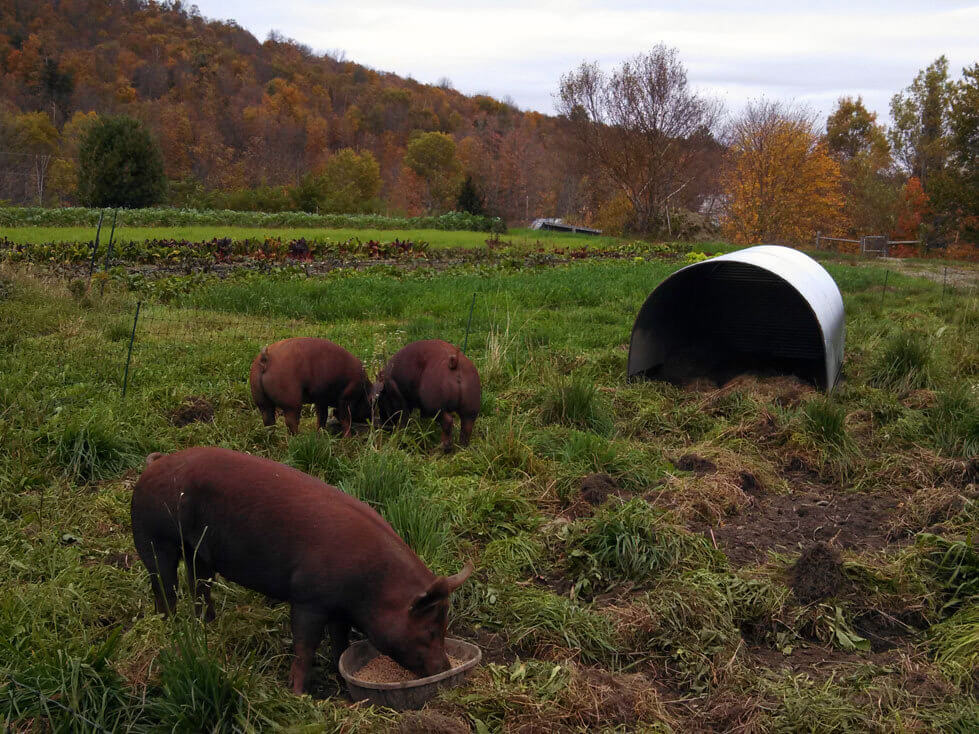
Expect to feed a hog around 700 pounds of feed over the course of six months to raise it to market weight. We feed our pigs twice a day, morning and night. Table scraps aren’t enough, although pigs enjoy some scraps as a treat, especially things like watermelon and cucumber in the summer.
Pig Health and Happiness
There is no creature as endearing as a happy, healthy pig. All a pig really wants is lots of food, clean water, and proper shelter. But they love some company, a scratching post, and room to run.
Pigs are social, and want other pigs for company. The more time you spend with them, the more they will want your attention, too! Some pigs love belly rubs and ear-scritches, others are more standoffish. Don’t be afraid to get into the pen with them. They will crowd you, and it can be a little intimidating, but they aren’t trying to hurt you, they are just investigating. Wear old clothes and tough boots, because hogs love to nibble at whatever is on your body. If you need to assert some dominance, don’t be afraid to put your foot in a pig’s face to push it away. Shoving and smacking with your hands will be totally ignored. It’s very hard to actually hurt a pig, but they can hurt you on accident (and occasionally on purpose—pigs bite).
The Humane Certified guidelines for raising pigs recognize that they are bright, curious animals, and suggest the inclusion of toys as part of a humane hog operation. Of course, pig toys need to be sturdy. Some suggestions I have heard include a bowling ball, a plastic buoy, an old tire. Here are some more ideas. Pigs on pasture need less enrichment than pigs indoors, of course!
As for physical health, we have always found pigs to be fairly resilient, especially when given lots of room to move and be outside. Periodically you will see a pig limping, but leg problems almost always clear up on their own. Pigs get colds and sniffles, which will also clear up on their own. Quarantining a sick pig is always a good precaution if you have a space for it. Pigs and humans share some pathogens, so don’t cuddle a sick pig, or sneeze in a pig’s face if you are sick. Always wash your hands after petting, feeding, or mucking pigs.
The most stubborn problem we have had with pig health has been worms. Intensive rotation on pasture is the best pest control, but if you have a worm problem, there are chemical dewormers and anti-parasitics available over the counter at feed stores. Some homesteaders swear by garlic or diatomaceous earth, but those are better at prevention than treatment.
Watch your pigs, and get to know their normal appetites and behaviors. As with all illnesses and infections, the sooner you catch parasite problems the easier they are to deal with. For the most part, pigs are energetic, happy and easy to take care of.
Slaughtering Pigs
If you are raising pigs for meat, you will reach the challenging day of slaughter.
The most important thing is to find a slaughter-service or mentor that you trust. Like all large animals, pigs are typically stunned with a bolt-gun or bullet to the head, and then have their throats slit. The bolt-gun shot has to be perfectly placed for a clean death, and it takes practice. If you want to do it yourself, find someone who knows what they are doing to mentor you. Again, ask local pig farmers about how they slaughter.
There is an art to a peaceful slaughter. I have seen slaughter go well and badly. A gentle, calm slaughterman can kill the last pig in a herd as calmly as the first. As tempting as it is to go back to the land and kill a pig with a knife the way it has been done for thousands of years, the gun or bolt-gun is the most humane slaughter method.
Laws about butchery are different in every state. In Washington, you are free to butcher your own animals as long as you are not selling any of the meat. Some businesses offer exciting home-butchery workshops. Folks travel from all over the U.S. to attend classes at Farmstead Meatsmith, a ferry ride away from Insteading HQ in Seattle. A craft butcher near you may offer instruction too. You may also live nearby custom butcher shops who contract with on-farm slaughter units, so that your animals can be cut and cured to your order. None of that meat is approved for resale either.
This video shows a Farmstead Meatsmith pig butchering class. WARNING: As you’d expect it’s pretty graphic.
So, Should You Really Do It?
Pigs are an amazing addition to a farmyard or homestead. They bring unique challenges but also great joy in their curiosity, intelligence and affection. It makes them hard to kill, but a treat to raise, and a pig provides an enormous amount of meat for a household.
Raising any animal is a big endeavor, and when something goes wrong, it is usually the animals’ health and wellbeing that suffers. Consider finding a mentor who has raised pigs before that you can call if you have questions or if something goes wrong. As always, community is the most important part of farming.



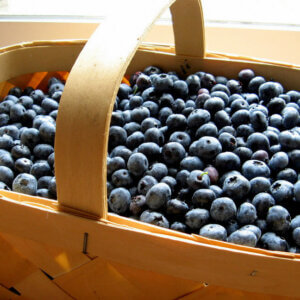






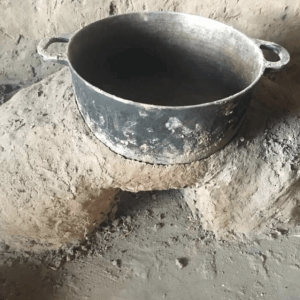



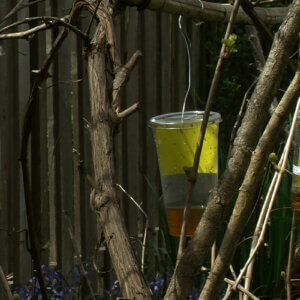




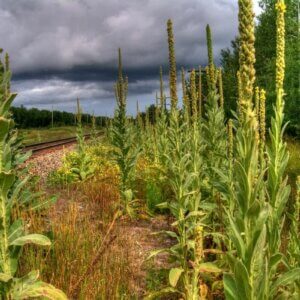

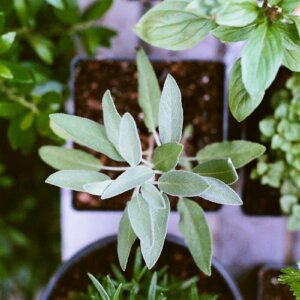

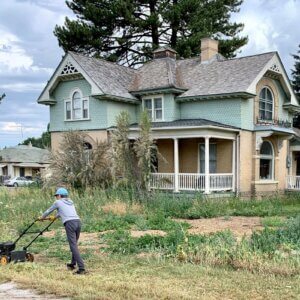
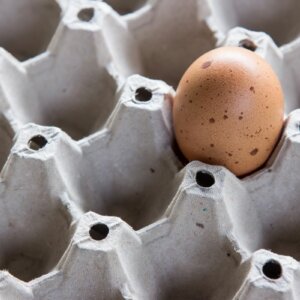



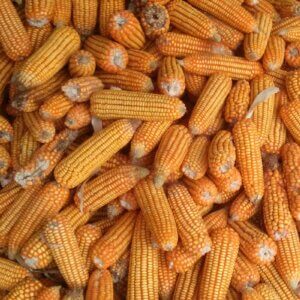



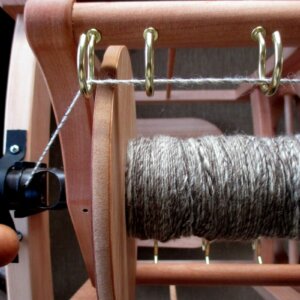






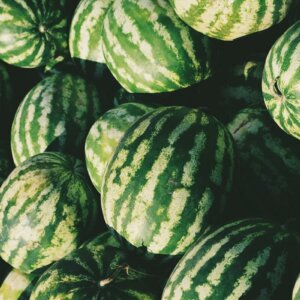

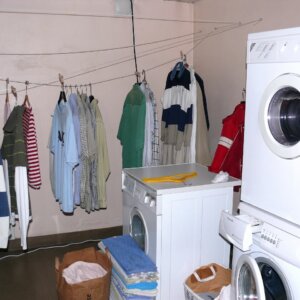
Leave a Reply